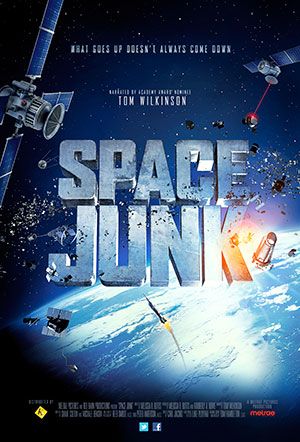Discover the Heart of the World

JERUSALEM takes audiences on an inspiring and eye-opening tour of one of the world’s oldest and most enigmatic cities. Destroyed and rebuilt countless times over 5,000 years, Jerusalem’s enduring appeal remains a mystery. What made it so important to so many different cultures? How did it become the center of the world for three major religions? Why does it still matter to us?

JERUSALEM attempts to answer these questions by following three young Jerusalemites and their families – Jewish, Christian and Muslim. Through their eyes, audiences will learn what it means to call Jerusalem home, and experience celebrations and events that mark the high points of a year in the life of the city.
JERUSALEM will also follow noted archaeologist, Dr. Jodi Magness, as she explores some of the most extraordinary historical sites in the region in order to better understand this crossroads of civilization.
JERUSALEM seeks to build trust and respect between Jews, Christians and Muslims by showcasing their common heritage and inspiring them, and the public, to better understand each other. Audiences will gain a completely unique perspective of a part of the world that captivates the imagination of billions of people.
Sea Monsters

Sea Monsters: A Prehistoric Adventure
Sea Monsters will transport you 82 million years back in time to the Cretaceous period when an extraordinary diversity of marine life populated vast ocean waters. Over the millennia, changes in Earth’s climate and geography have left ancient seabeds dry, revealing fossil evidence of this extraordinary—yet little known—time. In Sea Monsters: A Prehistoric Adventure, the scientific process comes alive as discoveries from around the world are woven together to reconstruct the complex puzzle of this prehistoric world.
Narrated by Liev Schreiber, 40 min.
Space News & Asteroid: Mission Extreme

First, live educators will talk about what is happening in astronomy right now in Space News then get ready for Asteroid: Mission Extreme!
This movie takes audiences on an epic journey to discover the possibilities that asteroids present for space travel. Using stunning visuals and state-of-the-art computer graphics, the film presents the fascinating idea, based on real science, that asteroids could be used as stepping stones to other worlds, veritable “way stations” in space enabling us to cross the entire solar system.
As with any venture in outer space, the challenges involved with making this idea a reality are enormous; however, a mission this extreme could ultimately lead us to learn how to protect our planet and how to successfully inhabit other worlds.
Explore what it would take for astronauts to reach an asteroid and then tame it for our use, as well as how such an extraordinary adventure could benefit humankind, in Asteroid: Mission Extreme.
Narrated by Sigourney Weaver
Current Night Sky - Space Lab

Our live full dome programs utilize Uniview, a visualization and simulation software aimed at presenting and teaching astronomy, astrophysics and earth sciences. Our full dome theater is a large-scale immersive environment, featuring realtime digital planetarium, and large-format cinema.
Current Night Sky
Long before television, GPS and street lights, there were the stars of the night sky. Visitors will travel through the seasonal night sky to learn about constellations, hear mythical stories and observe the magnificent Long Island sky.
Living in the Age of Airplanes

Living in the Age of Airplanes is a story about how the airplane has changed the world. Filmed in 18 countries across all 7 continents, it renews our appreciation for one of the most extraordinary and awe-inspiring aspects of the modern world.
Living in the Age of Airplanes is narrated by actor and pilot Harrison Ford and features an original score by Academy Award®-winning composer and pilot James Horner (Avatar, Titanic). The film was shot in 95 locations around the globe, from remote places like the South Pole and the Maldives to historically significant sites of ancient civilizations. The narrative weaves together the profound ways that aviation has transformed our lives, connecting countries and cultures while expanding horizons and minds.
Journey to Space

“We began as wanderers, and are wanderers still”
~ Carl Sagan
In the past half century, humans have punched through the stratosphere, walked on the moon, and lived continuously in orbit. In the coming decades, our unquenchable curiosity will take our species beyond the cradle of Earth to touch the face of another world. Strap in for the next giant leap. Next stop … Mars! Narrated by Patrick Stewart.
NASA’s next era will be its greatest yet. That is the clear “roadmap” painted by Journey To Space. The film absolutely annihilates the perception that the space program died with the end of the Space Shuttle Program by showcasing the exciting plans NASA and the space community are working on, and the challenges they must overcome to carry out audacious missions such as landing astronauts on Mars and capturing asteroids.
By using extensive interviews with astronauts Chris Ferguson (Commander of the final shuttle mission) and Serena Aunon (a new astronaut chosen for future flights), as well as a brilliant narration by film and television legend Sir Patrick Stewart, Journey To Space gives a sweeping overview of past space accomplishments, current activities and future plans.
Journey To Space puts into historical context the magnificent contributions made by the Space Shuttle program and its intrepid space pioneers. It uses the most spectacular space footage – including unique views of Earth and operations in space – such as deploying and repairing the Hubble Space Telescope. It then goes on to show how the Shuttle launched and assembled the International Space Station (ISS). Together, these programs have taught us how to live, build and conduct science in space. The ISS will continue operating in space until 2024, and the film shows how it is building a foundation for the next giant leaps into space.
The film concludes with a fascinating, realistic scenario of how astronauts will actually get to Mars, live there for long duration, and then return home after a two-and-a-half-year mission. This includes the new icons of the next chapter of space exploration:
Orion is NASA’s first spacecraft designed to carry humans on long-duration deep space exploration missions throughout the solar system.
Olympus, an inflatable transportation habitat, is an early concept 45- or 50-feet diameter module that would provide astronauts the work area and living space necessary for long-duration missions. Smaller versions have already flown in space, and a full-scale version is shown undergoing ground testing.
The Space Launch System (SLS), a new giant rocket, will carry spacecraft, Mars landers and ascent vehicles to place astronauts on the surface of Mars. SLS will generate over nine million pounds of thrust and will launch hardware into orbit equivalent to the weight of 22 elephants.
Journey to Space will both inspire a new generation of young people to dream of new horizons in space, and engender a new appreciation for the accomplishments of the Space Shuttle Program among an older generation who came to take it for granted.
Space Junk

"After half a century of space exploration we're now suddenly faced with what has long been a staple of science fiction -- an orbiting junkyard of cast-off space debris."
With media headlines repeatedly warning us of debris falling from the skies, orbital debris, or "space junk," has finally risen to the forefront of social consciousness. But what is space junk? How did it get there? Just how big (and serious) is the problem?
"Space Junk," narrated by Academy Award® Nominee Tom Wilkinson, is the first movie to explore the exponentially expanding ring of debris that threatens the safety of our planet's orbits. Harnessing the magical imagery the Full Dome Digital Theater, Director Melissa Butts takes us soaring -- from the stunning depths of Meteor Crater to an unprecedented view of our increasingly crowded orbits, 22,000 miles above earth.
On-screen, Don Kessler, (ret.) Head of NASA's Orbital Debris Office and the "Father of Space Junk," reaches back to the beginning of our solar system for understanding and guides us through the challenges we face in protecting our orbits for the future. At risk is the future of space exploration and the safety of the extensive satellite network that powers our modern day communication systems. This visually explosive journey of discovery weighs the solutions aimed at restoring Earth's orbits.
Stunning images transport the viewers by wrapping us in star fields and allowing us to witness massive collisions in space -- both natural and man-made -- as though we were in the center of the action.
Space News & Asteroid: Mission Extreme

First, live educators will talk about what is happening in astronomy right now in Space News then get ready for Asteroid: Mission Extreme!
This movie takes audiences on an epic journey to discover the possibilities that asteroids present for space travel. Using stunning visuals and state-of-the-art computer graphics, the film presents the fascinating idea, based on real science, that asteroids could be used as stepping stones to other worlds, veritable “way stations” in space enabling us to cross the entire solar system.
As with any venture in outer space, the challenges involved with making this idea a reality are enormous; however, a mission this extreme could ultimately lead us to learn how to protect our planet and how to successfully inhabit other worlds.
Explore what it would take for astronauts to reach an asteroid and then tame it for our use, as well as how such an extraordinary adventure could benefit humankind, in Asteroid: Mission Extreme.
Narrated by Sigourney Weaver

